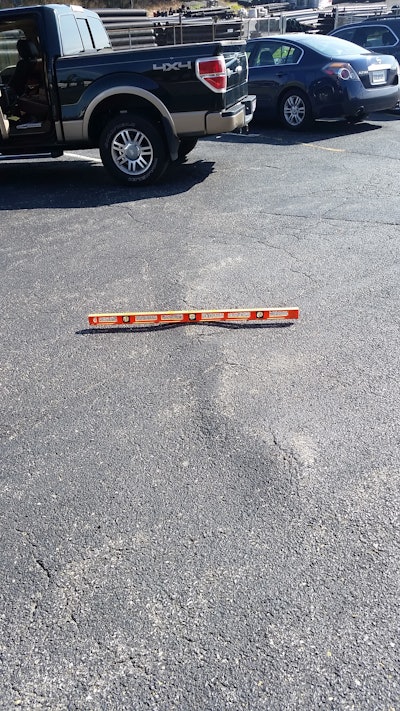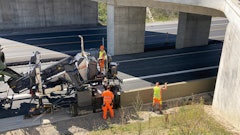
Some pavement defects are more uncommon than others, and what faced Pavement Advisory Board member Don Rooney, Pioneer Paving & Grading, when he served as a consultant on a job was a bit of a puzzle.
Rooney walked on a 10-year-old 50 x 200-ft. parking lot rehab job in Virginia – and saw waves of asphalt pavement.
“Drivers couldn’t drive at 10 mph over the pavement because of these waves,” Rooney says.
So what was the cause?
A core sample was taken and Rooney discovered the problem. Boiler slag, a byproduct of the steel-making process, was used as the base material. The slag is essentially the same material often used in sealcoating under the name Black Beauty, but where sealcoating slag is sand-sized aggregate the slag used as a base is considerably larger.
“It looks like crushed volcanic rock,” Rooney says. “It’s very abrasive and it’s a little bigger than sand.”
Rooney says boiler slag as a base material isn’t common in the United States but it’s a regional material available near steel mills. “Contractors use it because it works well and is about half the price of stone,” Rooney says. “It packs wonderfully.”
So 10 years ago this industrial plumbing supply parking lot was paved using boiler slag from a nearby steel mill as base material. Slag was placed 8 in. deep and covered with 3 in. of hot mix asphalt.
The problem, Rooney says, is the boiler slag was fresh from the steel mill.
“Fresh boiler slag releases a gas as it ages. So if it’s taken fresh from the mill, placed, compacted and then covered with hot mix asphalt, that gas hasn’t had time to be released,” Rooney says. “When it does start releasing it doesn’t have any place to go. It’s contained by the hot mix asphalt on top of it.”
Rooney says the gas then creates pressure beneath the asphalt, bending the pavement as it tries to find a way out. “In this particular parking lot the pressure from the gas created waves in the pavement – so bad that drivers couldn’t drive over them.”
He says boiler slag can be used effectively as a base material but that it must age to allow the gases to escape. He says most contractors who use it wait up to two years before using it as base material.
How to Fix It
The solution, Rooney says, is to pulverize the asphalt into the slag base, mix it together, then compact it before placing an overlay. The pulverized mix of base and surface course will serve as the new base. Rooney estimates there will be a 30% fluff factor of remixed material that will need to be hauled from the site to enable installation of a 3-in. asphalt surface course.
“We’ll want to pulverize the entire surface layer and about 2 in. deep into the boiler slag base course,” Rooney says. “Going 2 in. deep into the base ensures the material is mixed thoroughly and it also helps keep the teeth of the machine cool.”
Once the pavement is pulverized and compacted a 3-in. surface course will be installed and the wave problem will have been repaired.





![[Video] Bettis Asphalt Relies on Cat F-Series Paver on Wanamaker Road Project](https://img.forconstructionpros.com/files/base/acbm/fcp/image/2016/12/default.58507c7b77bb2.png?auto=format%2Ccompress&fit=crop&h=167&q=70&w=250)














